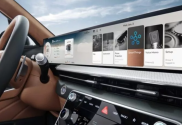
UK made “£14 million” device set to search for water on the moon
A UK-made device is set to search for water on the moon when it is blasted to the lunar surface next week.
As reported by the Standard, the instrument known as the “Peregrine Ion Trap Mass Spectrometer” will be secured to a static lander aboard the Peregrine Mission One rocket, built by US space company Astrobiotic, with mission launch scheduled for Monday, 8 January, as long as weather conditions are favorable.
If not, the Florida launch will be rearranged for the following day until a takeoff can happen.
Dr. Simeon Barber is the research scientist behind this project, which has produced the device thanks to a multi-agency approach and £14 million in financial support from the UK Space Agency’s membership with the European Space Agency.
That was relayed by BBC News with further details on the partnership between Milton Keynes (UK) based The Open University, The European Space Agency, NASA Goddard Space Flight Center, Science Technology Facilities Council (STFC), RAL Space, and the UK’s National Space Laboratory.
How does the device work?
Attaching a device to a rocket bound for the moon is easy to grasp, but the finer details of how it will work were discussed.
Dr. Barber explained that the instrument is comparable to “a weighing machine for atoms or molecules in the moon’s atmosphere.” He hopes the mission will aid future human missions to the moon, and if possible, “we could begin to extract water from the moon and use it in situ,” he continued.
The Peregrine Ion Trap Mass Spectrometer will become the first device from the UK and Europe to land on the Moon.
The spectrometer would be the first instrument from the UK and Europe to land on the Moon, and if all goes to plan, it will send data to a team of scientists in Maryland starting on 23 February.
Barber will be present in the US state when that process is due to get underway, and he could not hide his enthusiasm for the project:
“We’ll be watching this data come down in real-time, and it’s going to be really exciting to see what we find out,” he said.
“This is the first real opportunity for 50 years to put an instrument on the surface of the moon and to actually get down there and touch it and really make that definitive measurement.”
Image credit, David Besh, Pexels.com




